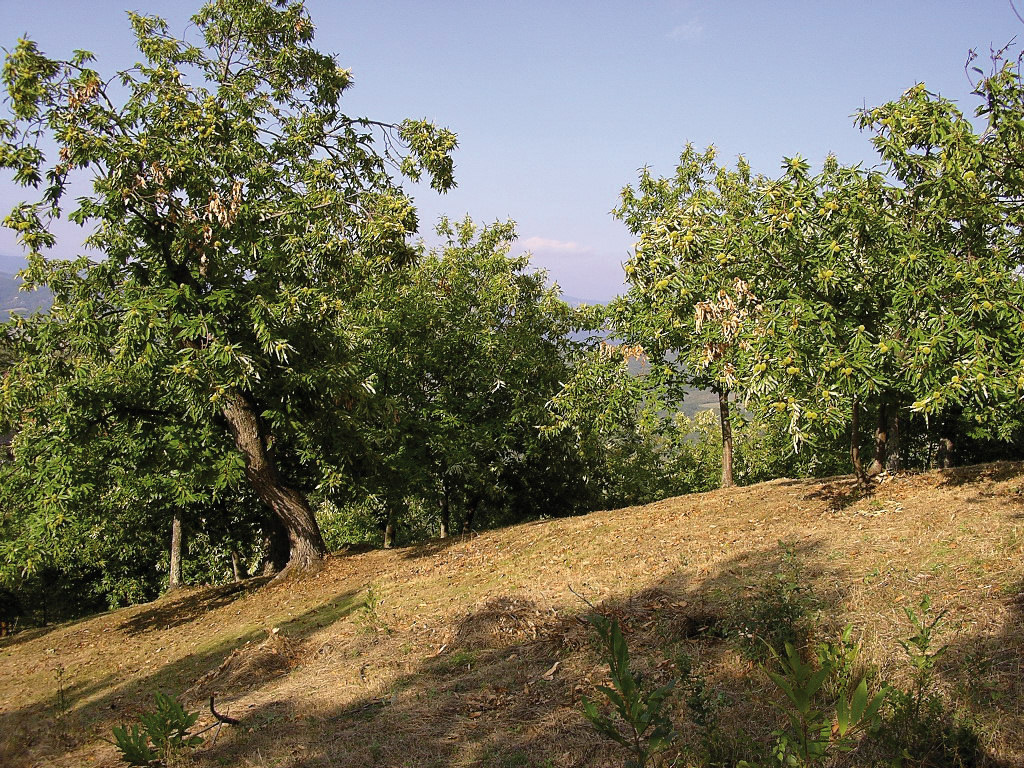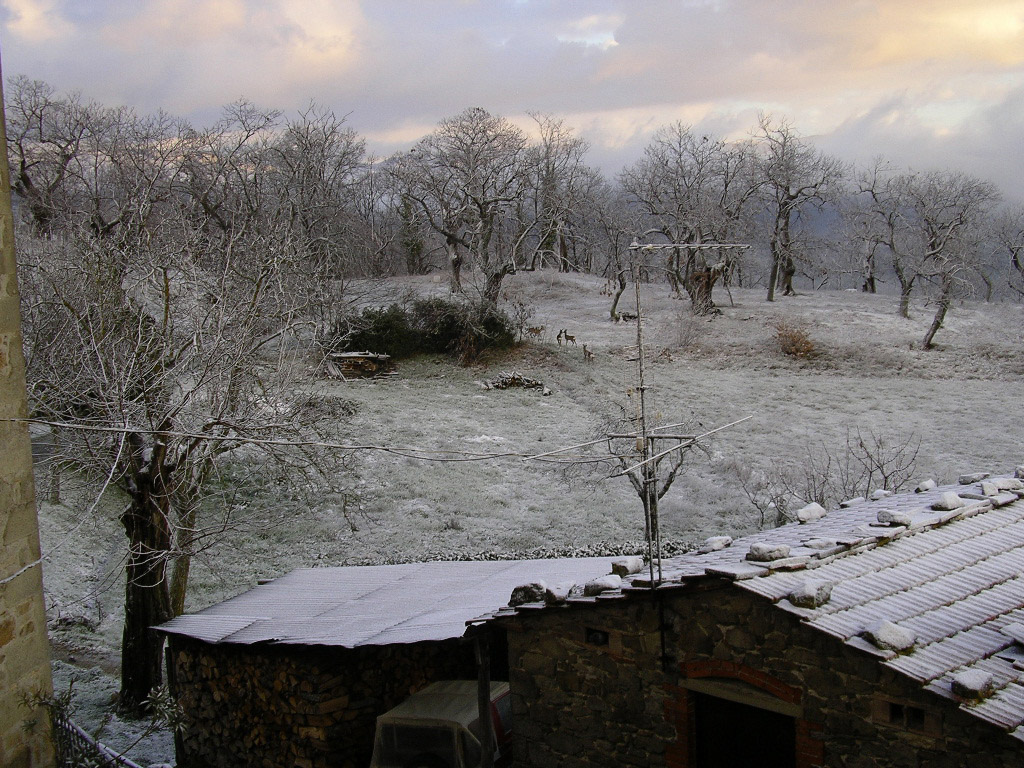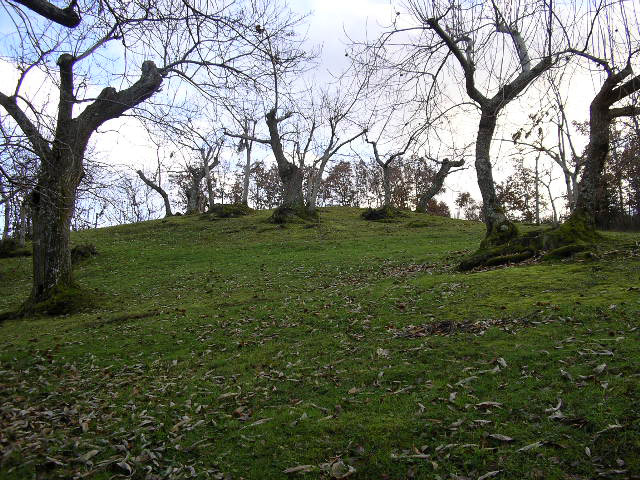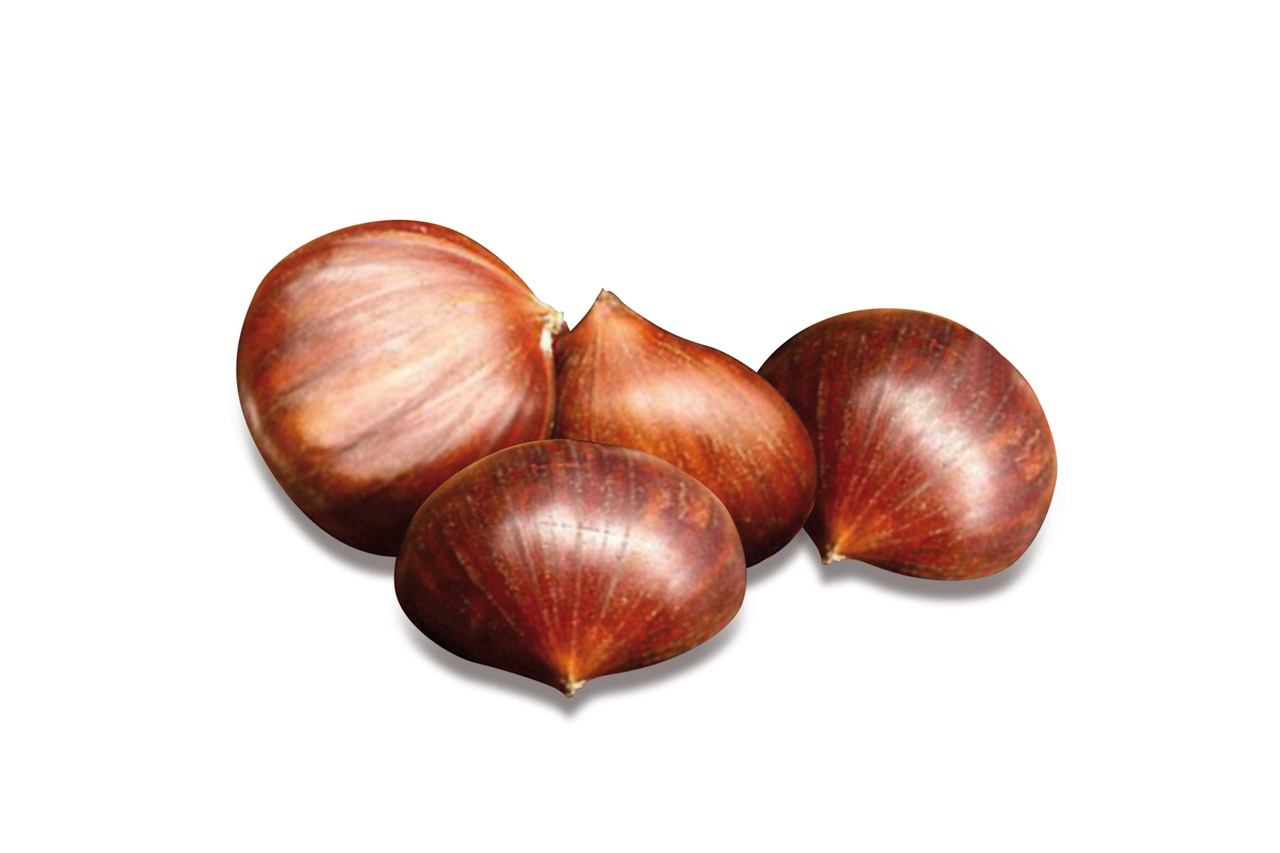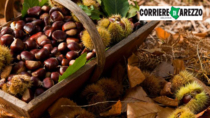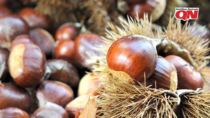Description
The Marrone di Caprese Michelangelo PDO refers to the raw or dried chestnut belong to the species Castanea sativa M., deriving from the local ecotype Marrone di Caprese Michelangelo, of the Marrone chestnut variety.
Production Area
The production area of Marrone di Caprese Michelangelo PDO is within the entire territory of the Municipality of Caprese Michelangelo, and the southern part of the Municipality of Anghiari, both in the Province of Arezzo, in the Tuscany region.
Production Method
The plantations must have a density of no more than 120 trees per hectare. Harvesting must take place from September 20th, without the use of chemical or mechanical aids to speed up the operation. Automatic tools that do not change the specific characteristics of the fruit can be used during the harvesting stage. It is also possible to gather the closed or partially open cupules in piles, known as pegliai, which at the termination of the natural fall can be beaten with a large wooden rake, a rigio, which also serves to separate the chestnut from the cupule. Although not mandatory, the chestnuts are usually immersed in water for about 5-9 days, a practice known as “curatura”, in order to eliminate micro-organisms that can cause the formation of moulds. After harvesting, the fruit which are destined to be dried are put in traditional wood or hot-air driers for about 40 days; they are then peeled mechanically. All operations must be carried out within the production area of Marrone di Caprese Michelangelo PDO, in order to preserve the freshness of the fruit and to guarantee the quality and traceability.
Appearance and Flavour
Marrone di Caprese Michelangelo PDO is an elliptical or square shape and has a Havana brown peel with brown streaks. The pulp is ivory-white, slightly cracked in the episperm; its aroma is reminiscent of almond and vanilla. The dried fruit, on the other hand, is ivory or light straw-yellow.
History
There is evidence of the presence of chestnut trees in the forest ecosystem of today’s production area dating back to the 9th and 10th centuries, during the Alemannic domination. The chestnut tree has always played a fundamental role in the life of local populations, which in the past used the wood to build furniture, wine vats and supporting beams. The chestnut groves were soon turned into domestic cultivations, also thanks to the introduction of the grafting technique. Since then, the area’s economy has been focused on chestnut production, which today is a business for many families in the Caprese Michelangelo and Anghiari areas, passed down from generation to generation.
Gastronomy
Marrone di Caprese Michelangelo PDO should be kept in a cool, dry place. It is delicious roasted, glazed, peeled and boiled, as well as an invaluable ingredient for many recipes, such as fritters, castagnaccio (chestnut cake) and the dessert Montebianco. It pairs perfectly with sweet, fresh and fragrant wines, or a red Novello.
Marketing
The product is marketed as Marrone di Caprese Michelangelo PDO, both fresh and dried. The fresh product is available between the end of September and the end of December, packed in sealed boxes weighing 1, 2, 3, 5, 10, 25 kg; the dried product is available in sealed packaging weighing 0.5, 1, 2, 3.5, 10, and 25 kg.
Distinctive Features
Marrone di Caprese Michelangelo PDO is characterised by its high starch content, given to the particular pedoclimatic conditions of the production area.









